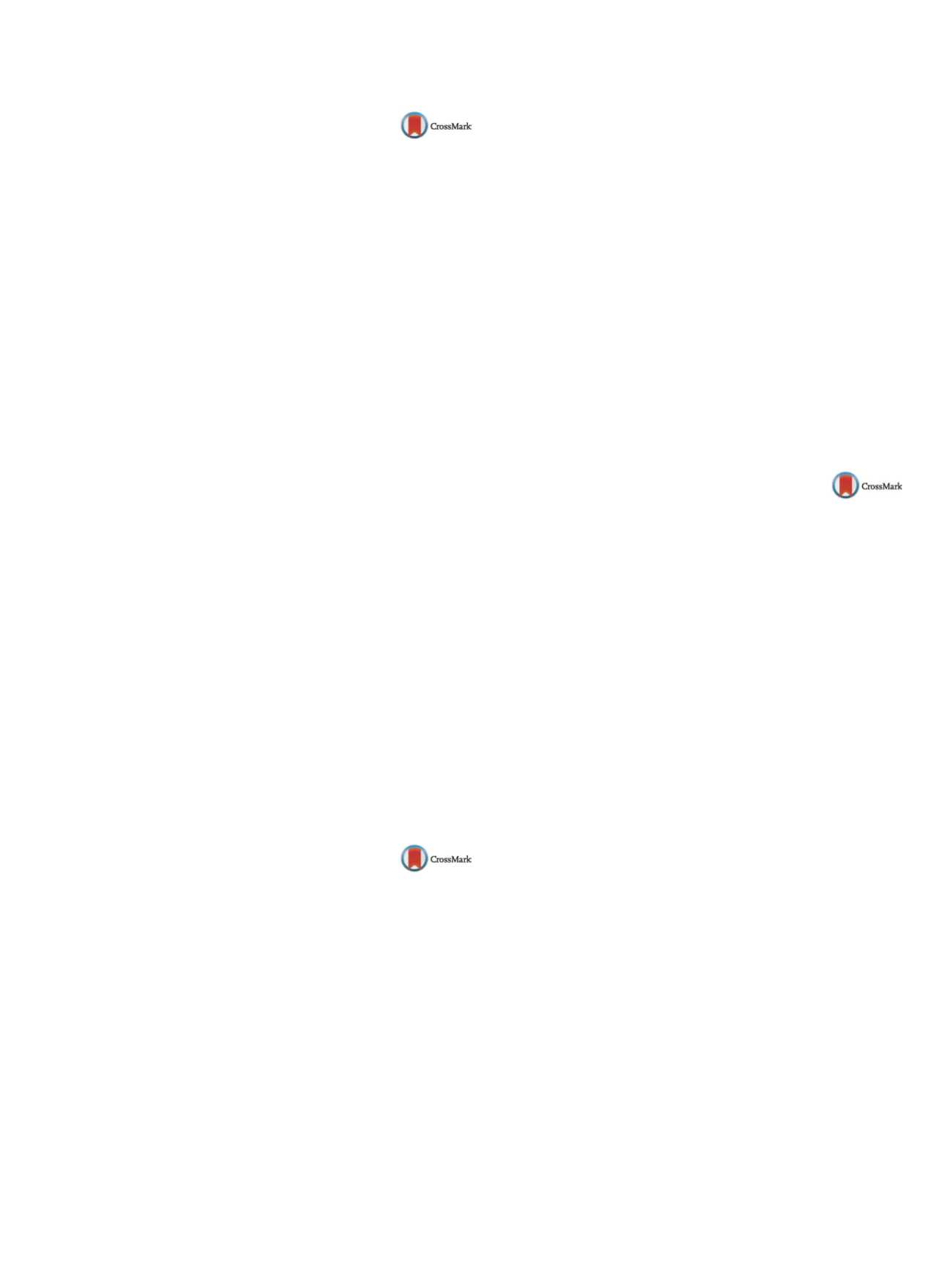

25th European Congress of Psychiatry / European Psychiatry 41S (2017) S645–S709
S679
EV0843
The compare of early maladaptive
schemas, emotion regulation and
general health in offender prisoner
men and normal group men
R. Davooodi
1 ,∗
, S. Ghahari
2, M.R. Pirmoradi
21
Clinical Psychologist, Department of Mental health in Azad
University Tonekaboon, Shaft, Iran
2
Clinical Psychologist, University of Medical Science, Tehran, Iran
∗
Corresponding author.
Object
The aim of this study was to compare early maladaptive
schemas, emotion regulation and general health in offender pris-
oner men and normal group men.
Methods
The study method was causal – comparative (ex post
facto). Participants included two groups: (1) all of offender prisoner
men (
n
= 47) in Fooman jail and (2) normal group men (
n
= 47) in
Fooman. Both groups were matched for age, occupation and educa-
tion. All of the participants completed Young maladaptive schema
questionnaire (YMSQ), cognitive emotion regulation questionnaire
(CERQ-P) and general health questionnaire (GHQ-12) individually.
Datawere analysed using independent t-test andmultivariate anal-
ysis of variance (MANOVA).
Finding
There was significant difference between two groups
in total score of early maladaptive schema questionnaire and
also in its subscales included abandonment, impaired auton-
omy/performance, impaired limits, other – directedness, over
vigilance/inhibition, emotional inhibition (
P <
0/01). The general
health was different between groups, too. In addition, while groups
showed significant difference in total score of emotion regulation
and one of the subscales (rumination), no significant difference
was explored between groups in self-blame, acceptance, positive
refocusing, planning refocusing, positive re-evaluation, perspective
taking, catastrophizing and others blame.
Conclusion
Significant differences between the two groups in
terms of general health, schema dimensions and emotional regula-
tion dimensions suggest that dysfunctional schemas, maladaptive
emotional strategies and low general health could be involved in
criminal behaviour.
Keywords
Early maladaptive schemas; Emotion regulation;
General health; Offender men
Disclosure of interest
The authors have not supplied their decla-
ration of competing interest.
http://dx.doi.org/10.1016/j.eurpsy.2017.01.1173EV0844
CADASIL case report: Psychiatric
symptoms as first manifestation of a
neurological process
N. De Uribe-viloria
1 ,∗
, M. De Lera Alfonso
2, M. Gomez Garcia
1,
M. De Lorenzo Calzon
1, A. Alonso Sanchez
1,
H. De La Red Gallego
1, G. Medina Ojeda
1,
F. De Uribe Ladron De Cegama
11
Hospital Clinico Universitario De Valladolid, Psychiatry, Valladolid,
Spain
2
Hospital Clinico Universitario De Valladolid, Neurology, Valladolid,
Spain
∗
Corresponding author.
Introduction
CADASIL (Cerebral Autosomal-Dominant Arteriopa-
thy with Subcortical Infarcts and Leukoencephalopathy), the most
common form of hereditary stroke disorder, is characterized by
headaches, transient ischemic attacks and psychiatric symptoms
which include mood changes, behaviour disorders and variable
levels of dementia.
Objectives and aims
To emphasize the necessity of discarding
somatic and neurological processes before a psychiatric diagnosis
is reached.
Methods
We present a case initially followed in psychiatry and
derived to neurology, and compare it with articles no older than
ten years, found in a bibliographic search in Medline (PubMed),
fitting the next keywords: CADASIL, autosomal dominant encepha-
lopathy, psychiatric symptoms.
Results
The most frequent manifestation of CADASIL is the early
age onset of cerebrovascular ischemic attacks, nonetheless, a fair
percentage of patients debut with insidious psychiatric symptoms,
especially mood changes, behavioural disorders and even mutism.
Independently of the age of onset, these symptoms are present at
some point of the illness in most cases.
Conclusions
Psychiatric symptoms can be found in a vast number
of somatic and neurological disorders, even being the first manifes-
tation of such processes. This challenges diagnosis, and given than
the line between brain and mind is blurred and not always clear,
cooperation among different specialities is of utmost importance
in order to correctly treat the illness as a whole, and not just the
sum of the parts.
Disclosure of interest
The authors have not supplied their decla-
ration of competing interest.
http://dx.doi.org/10.1016/j.eurpsy.2017.01.1174EV0845
Job satisfaction, burnout and coping
strategies: Comparison between
medical and surgical specialties
C. Derbel
∗
, A. Braham , A. Souilem , A. Ben Romdhane , R. Gallala ,
S. Ben Nasr , A.S. Bannour , B. Ben Hadj Ali
CHU Farhat Hached, Psychiatry, Sousse, Tunisia
∗
Corresponding author.
Introduction
Doctors have many constraints in their professional
practice, which influence negatively the quality of their perfor-
mance. This causes a psychological distress.
Aim
To compare job satisfaction (JS), burnout (BT), anxiety,
depression and coping strategies among doctors of medical (DMS)
and surgical specialities (DSS).
Method
Comparative and cross-sectional study conducted
among 33 DMS and 63 DSS with different grades, in the university
hospital Farhat Hached Sousse, Tunisia. We used job satisfaction
scale (JSS) to determine the degree of JS, hospital anxiety and
depression scale (HADS) to evaluate anxiety and depression, the
Maslach burnout inventory to assess the BT and the brief cope to
determine coping strategies.
Results
DMS were older than the DSS (
P
= 0.005). The MSC had
more unsettled family life (
P
= 0.04) and more monthly guard (5.87
vs. 4.96,
P
= 0.03). DMS had more days of outpatient (
P
= 0.00), were
more satisfied with the work schedule (
P
= 0.00), conditions of the
guards (
P
= 0.02). Relationships with colleagues weremore satisfac-
tory among DMS (
P
= 0.001). DMS were less confronted to violent
events (
P
= 0.03). The average score of JSS was higher among DMS
(
P
= 0.014). The BT was more reported in the DSS (
P
= 0.049). An
average sub-score HADS-D (depression) was higher in the DSS
(
P
= 0.00). An avoidance-focused coping was more adopted by the
DSS (
P
= 0.02).
Conclusion
DSS were generally less satisfied in their work than
DMS with obvious psychological repercussions. This incites to
intervene in factors that interfere with job satisfaction to improve
the quality of physicians’ performance.
Disclosure of interest
The authors have not supplied their decla-
ration of competing interest.
http://dx.doi.org/10.1016/j.eurpsy.2017.01.1175

















